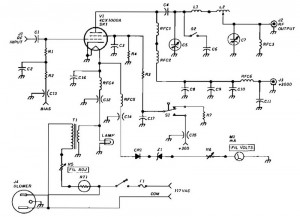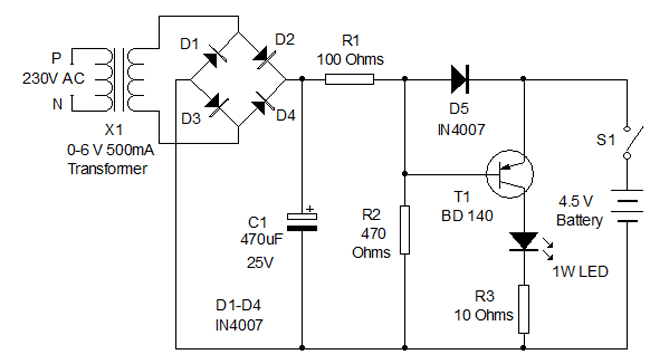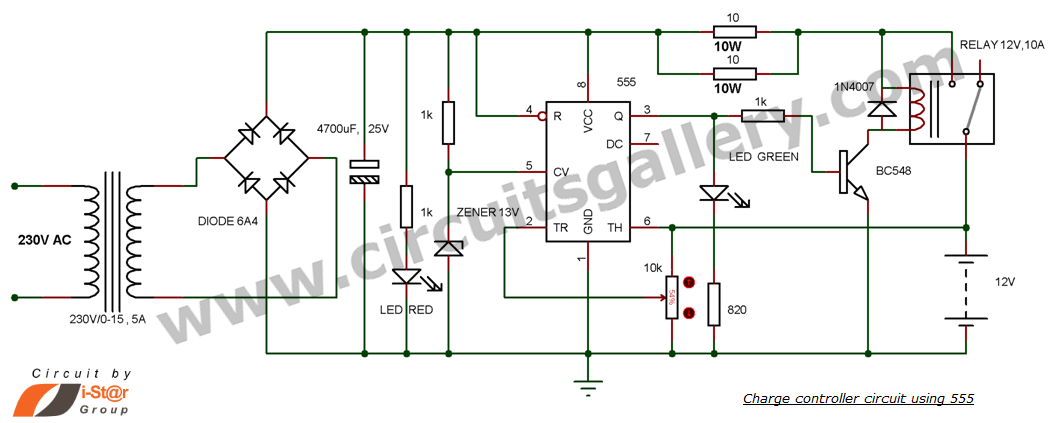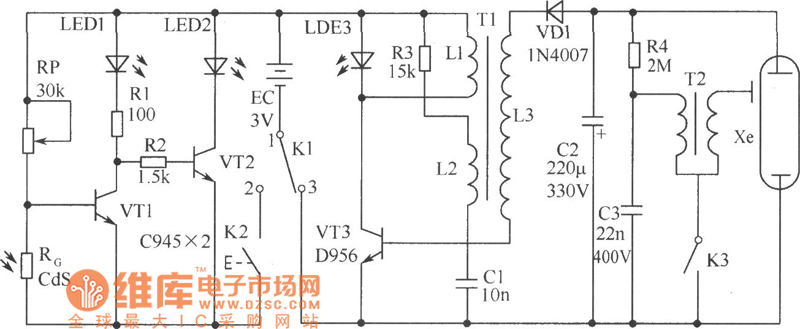
Metal detector schematic circuit using CS209A
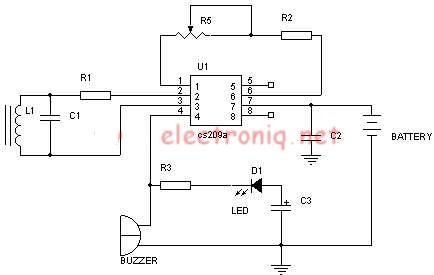
A simple metal detector electronic project circuit can be designed using the CS209A integrated circuit manufactured by Cherry Semiconductor. The CS209A integrated circuit is a bipolar monolithic integrated circuit intended for metal detection and proximity sensing applications. It incorporates two on-chip current regulators, an oscillator, low-level feedback circuitry, a peak detection/demodulation circuit, a comparator, and two complementary output stages. The oscillator, in conjunction with an external LC network, generates controlled oscillations, with amplitude highly dependent on the Q factor of the LC tank. The detector utilizes a single 100 µH coil. The integrated circuit features an internal oscillator, while the choke forms part of an external LC circuit, with its inductance varying due to the proximity of metal objects. The resulting change in oscillation is amplified and demodulated. LED 1 will illuminate, and a buzzer will sound when the inductance is altered. The setup process is straightforward: R5 is adjusted with the LC positioned away from any metal source until the LED lights up and the buzzer activates. The control is then reduced until the LED turns off and the buzzer ceases operation. When the choke comes into contact with a metal object that changes its inductance, both LED 1 and the buzzer will activate.
The circuit design for the metal detector using the CS209A integrated circuit involves several key components and configurations. The CS209A serves as the core of the metal detection system, leveraging its built-in features to facilitate the detection of metallic objects. The oscillator circuit, which is integral to the operation of this device, produces a frequency that is modified by the inductance of the coil. The 100 µH coil, essential for the detection mechanism, acts as the sensing element; its inductance varies when a metal object is nearby, resulting in a change in the oscillation frequency.
The external LC circuit, composed of the coil and a capacitor, establishes a resonant frequency that is sensitive to environmental changes. As metal objects come closer, the inductance increases or decreases, altering the resonant frequency and triggering the detection mechanism. The peak detection and demodulation circuitry processes the oscillation changes, allowing the comparator to determine when the frequency shifts beyond a preset threshold.
The output stages of the CS209A drive the LED and buzzer, providing immediate visual and auditory feedback when metal is detected. The adjustment of resistor R5 is crucial for calibrating the sensitivity of the detector. By setting the initial conditions with the LC circuit away from any metal sources, the system can be fine-tuned to ensure that it only activates in the presence of significant metallic interference.
In summary, the CS209A-based metal detector circuit is a compact and effective solution for metal detection applications, combining ease of setup with reliable performance. The design highlights the importance of the oscillator and LC circuit in achieving sensitivity to metal objects, making it suitable for various practical applications in fields such as security, archaeology, and hobbyist metal detecting.A very simple metal detector electronic project circuit can be designed using the CS209A integrated circuit manufactured by Cherry Semiconductor. The CS209A integrated circuit is a bipolar monolithic integrated circuit for use in metal detection proximity sensing applications.
The CS209A metal detector contains two on-chip current regulators, oscill ator and low-level feedback circuitry, peak detection/demodulation circuit, a comparator and two complementary output stages. The oscillator, along with an external LC network, provides controlled oscillations where amplitude is highly dependent on the Q of the LC tank.
The detector, is a single 100uH coil. The IC has an integral oscillator the choke forms part of an external LC circuit, it`s inductance being changed by the proximity of metal objects. It is the change in oscillation that is amplified and demodulated. Led 1 will light and the buzzer will sound when the inductance it`s changed. Set up is easy : R5 is adjusted with the LC away from any metal source so that the LED lights and buzzer sounds.
The control is backed off so that the LED goes out and buzzer stops. When the choke comes into contact with any metal object that alters its inductance, LED 1 and the buzzer will activate. 🔗 External reference
The circuit design for the metal detector using the CS209A integrated circuit involves several key components and configurations. The CS209A serves as the core of the metal detection system, leveraging its built-in features to facilitate the detection of metallic objects. The oscillator circuit, which is integral to the operation of this device, produces a frequency that is modified by the inductance of the coil. The 100 µH coil, essential for the detection mechanism, acts as the sensing element; its inductance varies when a metal object is nearby, resulting in a change in the oscillation frequency.
The external LC circuit, composed of the coil and a capacitor, establishes a resonant frequency that is sensitive to environmental changes. As metal objects come closer, the inductance increases or decreases, altering the resonant frequency and triggering the detection mechanism. The peak detection and demodulation circuitry processes the oscillation changes, allowing the comparator to determine when the frequency shifts beyond a preset threshold.
The output stages of the CS209A drive the LED and buzzer, providing immediate visual and auditory feedback when metal is detected. The adjustment of resistor R5 is crucial for calibrating the sensitivity of the detector. By setting the initial conditions with the LC circuit away from any metal sources, the system can be fine-tuned to ensure that it only activates in the presence of significant metallic interference.
In summary, the CS209A-based metal detector circuit is a compact and effective solution for metal detection applications, combining ease of setup with reliable performance. The design highlights the importance of the oscillator and LC circuit in achieving sensitivity to metal objects, making it suitable for various practical applications in fields such as security, archaeology, and hobbyist metal detecting.A very simple metal detector electronic project circuit can be designed using the CS209A integrated circuit manufactured by Cherry Semiconductor. The CS209A integrated circuit is a bipolar monolithic integrated circuit for use in metal detection proximity sensing applications.
The CS209A metal detector contains two on-chip current regulators, oscill ator and low-level feedback circuitry, peak detection/demodulation circuit, a comparator and two complementary output stages. The oscillator, along with an external LC network, provides controlled oscillations where amplitude is highly dependent on the Q of the LC tank.
The detector, is a single 100uH coil. The IC has an integral oscillator the choke forms part of an external LC circuit, it`s inductance being changed by the proximity of metal objects. It is the change in oscillation that is amplified and demodulated. Led 1 will light and the buzzer will sound when the inductance it`s changed. Set up is easy : R5 is adjusted with the LC away from any metal source so that the LED lights and buzzer sounds.
The control is backed off so that the LED goes out and buzzer stops. When the choke comes into contact with any metal object that alters its inductance, LED 1 and the buzzer will activate. 🔗 External reference
